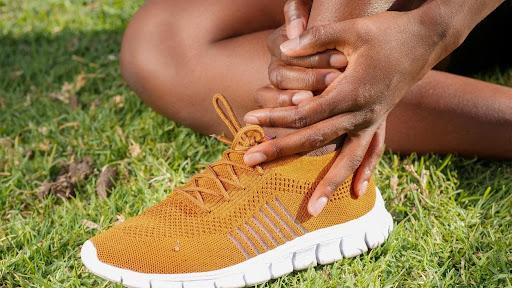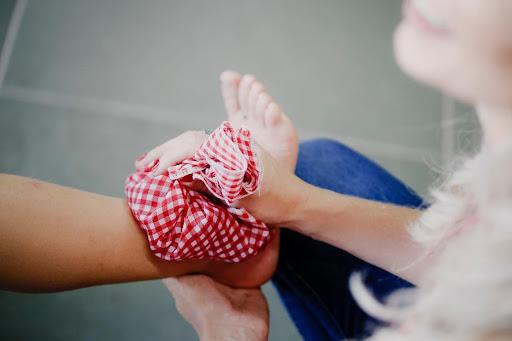

RICE stands for rest, ice, compression, and elevation. It is a popular method to provide relief against sprains, strains, and minor soft tissue injury. The RICE method is effective and can be implemented at home to provide quick relief and prevent tissue swelling after an injury.
In addition, it may offer some relief in emergencies like bone fractures and joint diseases before making it to the hospital.
Many people who have experienced some sport-related injuries can benefit from using the RICE method. This article will show you how each step in the RICE procedure is used and if you will need to see a doctor.
When Do We Use The RICE Method?
Sprains and strains are some of the leading causes of sports-related injuries. They commonly affect weight-bearing joints and large muscles like the ankle joint, hamstring, and calf muscles. However, they can also occur in the hands too.
RICE should be initiated as soon as you notice pain and swelling around specific joints or muscles. Note that RICE is effective for alleviating distress from minor, soft tissue injuries. When you suspect a severe underlying condition (like a fracture or dislocation), a trained professional should only use the RICE technique to prevent aggravating the situation.
Strain Vs. Sprain
Strain and sprain are two terms that are often used interchangeably to describe overstretching of ligaments and tendons. However, they don’t mean the same thing.
On the one hand, a sprain occurs when ligaments – fibrous tissue that connects bones – stretch too far with or without tearing. Sprains regularly affect the ankle joint. On the other hand, strains affect bones and tendons – the tough tissue that links muscles to the bone – and are more common in the hamstring and lower back.
Some symptoms of sprains include bruising, pain around the joint, reduced flexibility and movement, limited range of motion, and swelling. Strains may present in the same manner as sprains and occasionally have pain, swelling, joint pain, and reduced mobility and flexibility. However, the critical difference is that strains may also have spasms of the involved muscle.
What Can Increase The Risk of Soft Tissue Injuries?
Anyone is at risk of being affected by a sprain or strain. However, some issues raise the possibility of these injuries. Some include:
Poor form – Improper execution of fitness routines increases the susceptibility to injury. This emphasizes the importance of knowing the proper technique beforehand for a risk-free performance.
Inappropriate environment – There are some predisposing factors that you can control. For example, you should never work out in a slippery, wet, poorly lit room. These are hazardous conditions that interfere with stability and joint mobility.
Not warming-up – Warming up will condition joints and muscles for exercise. It allows blood flow to circulate through these structures and also enhances the range of motion.
Not wearing the right gear – Worn-out or ill-fitting gear can raise the possibility of sprains or strains. For example, wearing smaller shoes may impede balance and mobility at the ankle joint.
How To Use The Rice Technique
The RICE technique relieves pain and swelling if you’ve had a soft tissue injury or bruise. The RICE method works well within the first 48 hours of most soft tissue injuries. The main advantage is that anyone can use it at the gym, outdoors, or at home whenever damage has occurred.
RICE is a popular first-aid treatment in sports for sprained ankles, knees, or muscle strains. Anyone who gets hurt while exercising can benefit from it.
Here’s how to correctly perform the RICE treatment:
Rest

There is a lot of scientific data to back the use of RICE within 48 hours of bruises, strains, sprains, and soft tissue injury. The most important aspect of it is rest from using the injured limb. Studies show that immobilization can considerably affect healing, especially in joints and muscles. During the acute stage of healing, immobilization promotes recovery.
Movement and weight bearing can worsen the damage, causing more pain and swelling. If you have an injury affecting the joints and muscles of your legs, mobility aids (like a walking frame, canes, and crutch) may reduce the use of the injured limb or joint.
However, keep in mind that immobilization should not go beyond a week. A recent study finds that initially resting for 48-72 hours before resumption of light activity is recommended. Crutches may be used to increase comfort and non-weight bearing.
Ice
Cryotherapy, also known as ice therapy, involves the indirect application of ice over an injured joint or muscle. Ice may cause blood vessels to narrow and reduce metabolism. As a result, this physiologically minimizes the swelling of joints and muscles.
In addition, ice creates a sensation of numbness by interfering with impulse transmission from the injured tissue to the brain. This effect may also reduce muscle spasms.
You first have to wrap an ice pack in a towel or cloth and leave it over the injured part for 20 minutes, then remove the ice for 20 minutes. There is no standard dosing for cryotherapy, and you can implement it as often as possible in the first 1-2 days of injury.
However, if ice is placed over the injured part for too long, it may be detrimental to healing. Cryotherapy steeply for more than 20 minutes at a go raises the risk of ice burns by excessively inhibiting blood flow through veins and arteries.
There isn’t a consensus as to how often ice should be applied. However, 15-20 minutes each hour seems adequate to mitigate much of the distress. Athletes who use cryotherapy may note a significant improvement within a week and rehabilitate faster.
Be cautious when using ice. Ice should never be applied directly to the skin – wrap ice in a damp towel or cloth to avoid ice burns. In addition, people at a higher risk of ice burns (such as people with diabetes and circulatory insufficiency) should use cryotherapy under the guidance of a skilled professional.
Compression
Compression works in an almost similar manner to ice in the alleviation of swelling and pain. First, compression reduces blood flow to the injured tissue or joint, minimizing bleeding and inflammation. Second, elastic dressings and similar compression devices may also limit swelling of the damaged part.
While not the primary use of compression dressing, it may protect the injury by inhibiting excessive movement.
A properly applied elastic compression bandage should offer effective relief against swelling and pain without aggravating your discomfort. In other words, bandaging that causes more pain or interferes with blood flow will cause more harm and should be removed.
A compression bandage is simple to use. Start the application distal to the injury and overlap each layer as you move proximally. As a rule of thumb, do not wrap too tight, or you will impede blood supply.
Research indicates that currently there isn’t a method of compression superior to another. Notwithstanding, compression is effective in managing soft tissue injuries and optimally reduces swelling and improves the quality of life.
Elevation
Try to keep the injured part above the level of your heart. Elevation alleviates swelling by reducing blood pooling distally and encouraging venous return to the systemic circulation. Therefore, elevation implies a few days in bed or on the couch. Sometimes it is almost impossible to have a body part above the heart. For example, in knee sprains and bruises, aim to keep the leg parallel to the floor or above the pelvis.
Elevation in RICE should be used for up to two days post-injury for a potent effect. You may lie down and use a pillow to elevate the injured part. This causes fluid to drain back into circulation and reduces swelling. Current studies show that keeping the injured part 15-25 cm above the level of the heart facilitates venous and lymphatic drainage to resolve swelling.

RICE Variations
For benign strains, strains and bruises, many people find that the RICE technique may help them spring back to action within 2-3 days. That said, there are additional recommendations that complement the RICE method.
Here are some examples:
DRICE – Diagnosis, Rest, Ice, Compression, and Elevation
HI-RICE – Hydration, Ibuprofen, Rest, Ice, Compression, and Elevation.
POLICE – Protection, Optimal Loading, Ice, Compression, and Elevation.
PRICE – Protect, Rest, Ice, Compression, and Elevation (for example, using a walking frame or crutches to prevent aggravating the injury).
PRICES – Protection, Rest, Ice, Compression, Elevation, and Support (like taping or bandaging).
PRINCE – Protection, Rest, Ice, NSAIDs (like ibuprofen), Compression, and Elevation.
RICER – Rest, Ice, Compression, Elevation, and Referral
The Path To Recovery
Several studies have shown that patients with bruises and soft tissue injury may recover faster if they initiate exercise as early as possible. Some scholars argue that R in RICE may be unnecessary within the first few minutes. They say that using a splint or brace alongside passive or active movement may hasten recovery.
While some swelling and pain are inevitable, too much can make ambulation difficult. For example, you cannot walk on a sprained ankle when pain and swelling impede the possible range of motion and weight bearing.
So, RICE is a critical part of overcoming initial pain and swelling so that athletes may start working out as soon as healing kicks off.
However, remember that RICE is not a substitute for treatment – it is only first aid or an adjunct to therapy. Therefore, unless your doctor says so, do not use the RICE technique for more than 72 hours after injury.
The Bottomline
Any soft tissue injury may cause tissue swelling, bruising, and inflammation. Healing occurs as damaged tissue is replaced by scar tissue, also known as collagen. In most cases, first aid can accelerate recovery so that an individual returns to normal activities on time.
The RICE technique stands for Rest, Ice, Compression, and Elevation and has been used for years in the sports industry. This widely used method has been used in the acute management of sprains, strains, bruises, and a wide variety of soft tissue injuries.
However, following injury, athletes should not use RICE for more than 48-72 hours to avoid further aggravating their injuries. And once the RICE method is complete and both pain and swelling have subsided, gradually ease into stretching and light workouts to help the injured part return to normal function.






















You must be logged in to post a comment Login